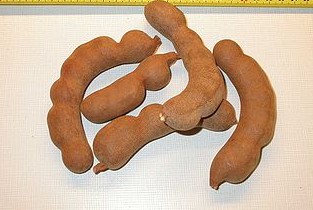According to The Food and Agriculture Organization (FAO), countries in Africa disproportionately affected by acute food insecurity, increased during the pandemic. The institution attests that close to 98 million people faced acute food insecurity in 2020— or two out of three— and they were on the African continent.
Despite this worrying scenario, Africa holds a number of super foods and drinks that can provide important nutrients to the human immune system. On days like these, eating healthy has been proven to be more important than ever.
Travel Noire has compiled a list of 6 African superfoods you should try to enhance your health.
1. Teff

Teff is a fine grain that comes in a variety of colors, from white and red to dark brown. It is an ancient grain from Ethiopia and Eritrea, often used in the cuisines.
Ground into flour, teff is used to make the traditional bread injera; a flat, pancake-like, fermented bread that complements their exotic spices.
It leads all the grains in its massive calcium content. A cup of cooked teff contains 123 mg of calcium, about the same as half a cup of spinach. It’s also high in protein, iron, and— unusual for a grain— in vitamin C.
2. Fonio

Fonio is probably the oldest African cereal. For thousands of years, West Africans have cultivated it across the dry savannas. Indeed, it was once their major food. In certain regions of Mali, Burkina Faso, Guinea, and Nigeria, for instance, it is either the staple or a major part of the diet.
Fonio is a good source of B vitamins, including thiamine, riboflavin, and niacin, iron, copper, zinc, and magnesium Iron and copper help form red blood cells, connective tissue, and blood cells. While zinc plays a role in immune function, protein synthesis, and cell growth and division, magnesium aids numerous biochemical reactions and is required for energy production.
3. Baobab fruit

The Baobab is a common tree in Southern Africa’s savannas. Its fruit provides nutrition to both humans and animals such as birds and insects.
Baobab fruit is very dry, so it keeps almost indefinitely, and it is used to make juice from its powder by soaking the fruit and straining out the pulp and seeds.
Baobab fruit is particularly high in antioxidants, as well as fiber (10 times the fiber of apples), potassium, magnesium and iron.
Powdered baobab leaves are commonly sold in markets around West Africa, and can be mixed in to juices.
4. Hibiscus

A glass of hibiscus tea is very popular in Egypt and Sudan. It can also be served chilled with ice.
Hibiscus tea is rich in antioxidants minerals and vitamin C. When served hot, it loses a bit of its sour flavor. It can also be used to decrease body temperature, treat heart disease, and sooth a sore throat.
Recent studies have looked at the possible role of hibiscus in the treatment of high blood pressure and high cholesterol.
5. Tamarind

Native to tropical Africa and prized for its sweet-and-sour flavor, tamarind is used to make juice, and is rich in vitamins, minerals and antioxidants.
Its sticky pulp is a rich source of dietary fiber; 100 g of fruit pulp provides 13% of the dietary fiber that a healthy person needs in a day.
Tamarind is particularly useful for restoring electrolyte imbalance to treat dehydration.
6. Amaranth
Amaranth is a very popular traditional leafy vegetable. It is consumed in most parts of South Africa. Amaranth leaves are a good source of iron and beta-carotene. It is traditionally wild harvested but can be cultivated with great success.
It contains tocotrienols, which are a form of vitamin E that may reduce cholesterol as well as the risk of heart disease, Also, Amaranth leaves are a good source of potassium and magnesium, which can reduce stroke risk as well as hypertension.





